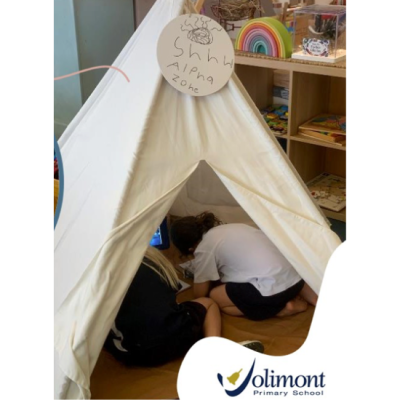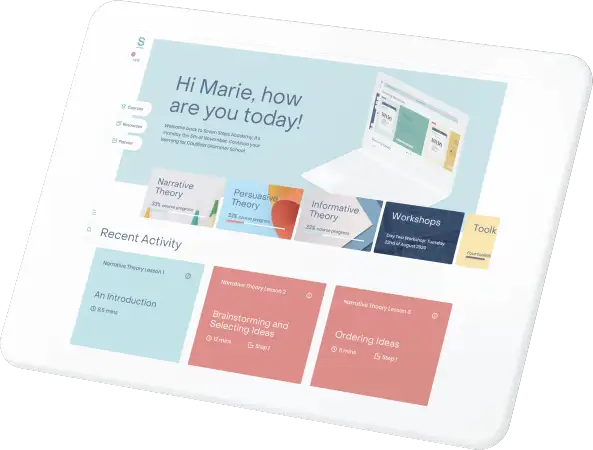Student disengagement. A problem that’s not news to any educator anywhere in the world, right? But it seems to be a hotter topic than usual right now. After so many years of interrupted learning, students are finding it harder than ever to dig deep, find their mojo and keep trying when the learning gets a bit hard.
There are lots of possible reasons for disengagement – personal factors, school-related factors or a combination of both. Many factors are outside a teacher’s control, but there are some areas where we can make an impact.
In fact, just a few simple tweaks can make a big difference to the level of engagement in the writing classroom.
10 ideas to lift student engagement in writing
- Create a routine
- Run short, sharp activities
- Celebrate small wins
- Use writing prompts
- Don’t write!
- Play favourites
- Scaffold students’ learning
- Add an element of choice
- Use technology
- Make it relevant
1. Create a routine
Setting up clear and consistent times for dedicated writing practice reduces the fear of the unexpected writing task that jumps out of nowhere and can wrong-foot reluctant writers.
Consistency creates change, so set up a routine and try to stick to it. Your students will thank you (on the inside!).
Hint! Being consistent doesn’t just have to relate to time. Physically moving into a ‘writing zone’ or sounding a fun jingle can signal that it’s time to write and help to build confident mindsets.
Try this brilliant idea from Jolimont PS in WA – an Alpha Zone tent provides a soothing, dedicated space for students to get in the mood for writing.

2. Run short, sharp activities
Short, targeted activities that focus on specific skills in writing (e.g. creative thinking) maximise the learning and serve as an antidote to student overwhelm and boredom.
Hint! Try Five Minute Photo Fast Starts as a fun way to get in plenty of practice generating ideas.
You could add a novelty egg timer or countdown as part of your routine. Get students to share their favourite start and learn from each other.
3. Celebrate small wins
Mastery of something feels good. We all like to feel confident in our abilities and frequently celebrating small successes can change students’ perception of writing over time.
Small wins worth celebrating might include brainstorming five creative endings to a story, writing a captivating first line, using unique descriptive language or editing a first draft.
Hint! It’s easier to celebrate small wins when students are working on small writing tasks.
You could use reward stickers or stamps, or allocate a comfy beanbag for students to work on when they’ve aced a small task. Seven Steps teachers could use our student certificates to reward students.
4. Use writing prompts
Never give students a blank sheet of paper and the unbearable weight of expectation!
Instead, use visual prompts to combat writer’s block and get the creative wheels turning. Writing prompts can be short, fun and unique. They’re a sure way to boost student engagement.
Hint! Seven Steps has a range of narrative, persuasive and informative writing prompts to get students’ creative juices flowing. Giving students a moment to close their eyes and visualise before they start writing also helps get the ideas flowing.
5. Don’t write!
Sometimes the best way to engage reluctant writers is to put down the pen and paper and get verbal!
Planning and writing don’t have to be solo activities, so encourage collaboration and the sharing of ideas in your classroom. Bouncing concepts around, learning from each other and playing with plots and plans is good fun and supports students’ thinking.
Hint! Try telling a story orally as a class.
Have students stand in a circle. Start them off with a suitable Sizzling Start prompt such as ‘“Quick! It’s getting closer!” Simon cried’ or ‘Whoosh! The skateboard picked up speed as it hurtled towards the fence.’
Taking it in turns, each student adds a sentence as you move around the circle. No one knows where the narrative might end up but it’s a fun journey!
6. Play favourites
To pique students’ interest and improve student engagement, use books, stories or a topic they love! They don’t always have to work on a ‘new’ piece of writing. Ask students to change the beginning or end of something that already exists. Model how to add in new characters or really unexpected facts.
Hint! Have students consider what would have happened in the story if there were three little kangaroos instead of pigs?
7. Scaffold students’ learning
Use word banks, sentence starters, graphic organisers and templates to help students think first, write second. Gradually reduce these supports as students gain confidence – scaffolds are great for first attempts but remember to use them as a floor not a ceiling.
Hint! Our Chatterbox template is a collaborative story planning game that students love. Students can use it to generate lots of ideas as the starting point for their story.
8. Add an element of choice
Students are empowered if they have some choice and buy-in, so let them choose what to write about and how to write it.
Hint! Think beyond ‘writing’ – communicating comes in many forms, e.g. comic strips, storyboards, TikTok videos, voice recordings, diary entries, documentary scripts, brochures.
9. Use technology
It doesn’t have to be an essay on a piece of paper – incorporating technology can increase student engagement too. Why not experiment with different types of technology in your classroom?
Hint! Try some of the practical technology-based writing activities in our Inspiring Great Writing Using Technology resource.
Related Blog: The magic of technology – inspiring great writing
10. Make it relevant
Use WALT (We are learning to), WILF (What I’m looking for), WIIFM (What’s in it for me?) and TIB (This is because) to show how the task has relevance beyond the classroom. It’s important to find a real-life purpose and audience to hang the task on so students can see how it benefits them.
Hint! Check out our Inspiring Change activity and Adventure Camp writing prompt for examples of writing with a real-world application.
Keep it real
Small, consistent changes repeated over time will help, so make sure you’re being realistic with yourself too … and celebrate the buzz as it builds.
And remember – some days you could introduce a belly dancing llama into the writing classroom and some students will still be disengaged!
When exploring the reasons behind a lack of student engagement in your writing classroom, check out 10 questions to consider with reluctant writers.
Related Blogs & Articles

‘Student confidence has improved; they are enjoying writing (a once very hated task!) and they have achieved amazing results!’
Mary Seaman, Al Sadiq









